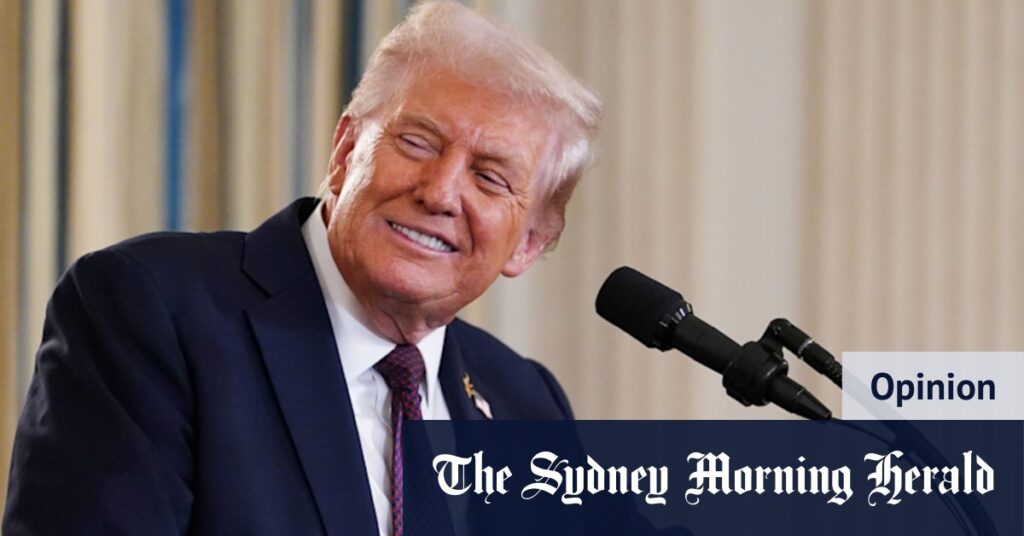
As the United States enters a new fiscal year without an approved budget, the Trump administration finds itself at the center of a government shutdown, raising concerns about potential economic repercussions. Unlike previous shutdowns, this one unfolds amidst significant economic uncertainty, much of it attributed to the administration’s own trade and immigration policies.
The shutdown, which began on October 1, threatens to furlough approximately 750,000 government employees without pay. Compounding the issue, the administration has signaled an unprecedented willingness to permanently reduce the federal workforce, a move that could exacerbate the rising unemployment rate observed even before the shutdown commenced.
Economic Indicators and Potential Risks
Economic indicators such as inflation have been on the rise, heightening fears of stagflation, a condition characterized by stagnant economic growth and high inflation. The possibility of further job cuts, following the earlier reduction of 300,000 government positions during the administration’s crackdown on federal bureaucracy, adds complexity to the Federal Reserve’s decision-making on interest rates.
With the shutdown halting the release of crucial economic data, including the payroll report and inflation figures, the Fed faces increased challenges in assessing the economy’s health. The duration of the shutdown will significantly impact its economic and market consequences, with longer closures likely to cause more profound effects.
Historical Context and Market Reactions
Historically, government shutdowns have been brief, averaging about eight days, and have had limited economic impacts. However, the most recent shutdown, lasting 25 days between December 2018 and January 2019, resulted in a 0.4 percentage point reduction in GDP, according to the Congressional Budget Office. This was a partial shutdown, affecting only 25% of government functions.
The current shutdown’s disruption extends beyond government agencies, affecting contractors and businesses reliant on government services. Prolonged closures could lead private companies to furlough their workers, further dampening consumer confidence and spending.
Past shutdowns have caused “lost” GDP growth of 0.1 to 0.4 percentage points, with markets typically rebounding once the government reopens.
Global Perceptions and Financial Markets
Internationally, the US dollar has weakened by approximately 11% this year, reflecting concerns over the administration’s unpredictable policies. Gold prices have surged by 47%, reaching record highs as investors seek safe havens amidst tariff disputes and rising US debt.
Traditionally, the US dollar and bond markets have been considered safe havens during global uncertainty. However, the current administration’s erratic nature has led to a reevaluation of these assumptions. Bond yields have shown volatility, with short-term securities experiencing more significant declines than long-term bonds.
Political Stalemate and Future Implications
Political analysts warn that the shutdown could be prolonged due to the polarized nature of US politics. The Democrats are resisting efforts to reverse healthcare spending cuts, while the Trump administration is determined to maintain these reductions and capitalize on the shutdown to advance its agenda.
Republican leaders have expressed willingness to negotiate healthcare funding, but only after securing a short-term funding package without conditions. The Democrats, however, are reluctant to relinquish their leverage, fearing insubstantial concessions from their counterparts.
Amidst this political gridlock, the administration has frozen billions in state-allocated funds for environmental and infrastructure projects, further straining relations with Democrat-led states. The economic fragility, coupled with rising unemployment and reduced federal contributions, presents a challenging environment for stability and growth.
“If history is any guide, the shutdown and its impacts will be fleeting. With the Trump administration frenetically making and rewriting history, however, this time could be different.”
The ongoing impasse and potential economic deterioration could unsettle the stock market, which has reached record highs due to the AI boom. Any signs of market instability could lead to broader economic consequences, given the inflated valuations.
While previous shutdowns have been temporary with minimal economic impact, the unique nature of the current administration and the heightened political polarization suggest that this shutdown could have more lasting effects. As negotiations continue, the world watches closely to see how this chapter in US political history unfolds.





